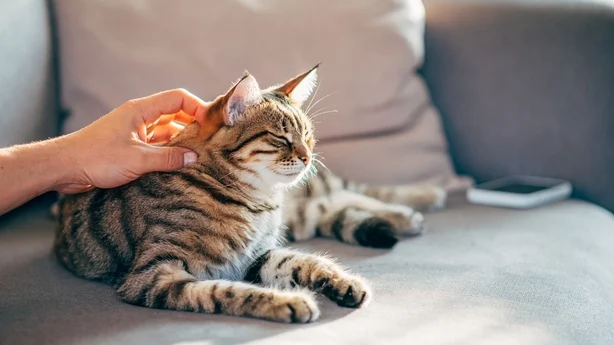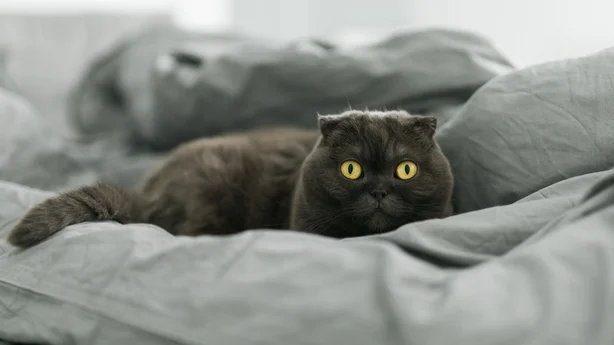You may have heard of the XL bully, a relatively new breed of dog that has made headlines for acts of aggression, leading to strict rules about owning them in England and Wales, and in Ireland from February 2025.
But what about bully cats, a new breed of felines inspired by the XL bully?
Clare Meade of the Cork Cat Hospital joined Today with Claire Byrne to discuss the worrying trend of extreme cat breeding, and whether we could start seeing breeds such as teacup and bully cats in Ireland.
"The bully cats have been bred to look like the XL bully dogs", Meade says. "They're a hybrid breed between the bald cats that have been around since the 1960s, bred with the dwarf cats, which have also been around for many decades."
"What it has resulted in is a bald, very highly folded skin, very strong muscular body and for all intents and purposes they do look like the XL bully dogs, but just to reassured people. they're not bred in any way for aggression and aren't for fighting."

Meade cautioned that despite this, the veterinary community have "significant concerns" about the welfare of these cats due to the genetic abnormalities that are bred into them, and how they are increasingly seen as a "status symbol".
"We would love if we moved away from that way of owning pets, cats and dogs."
Cats, Meade says, are supposed to have hair, particularly whiskers, which are important for orientating themselves in the world, which the bully cats do not have.
"They're also unable to survive in the wild, which again is a huge concern to the veterinary community because cats do go missing, they get lost and if a hairless cat gets lost they can't keep themselves warm, and they also become very badly sunburned.
"So they're essentially an animal that is entirely dependent on their human carers. That wouldn't be true of traditional cats and even some of the pedigree breeds are not fully dependent on their owners", she adds.
Dwarfism in cats also causes joint issues in the future, Meade says, and limits a cat's ability to jump up high, a basic part of their natural behaviours.

There is, however, a movement in wellfare circles against breeding cats like Scottish folds, another breed that suffers from deformities that cause intense pain and discomfort in their joints.
However, as Meade says, "ethics are different to morality, someone's individual morality might allow them to buy one of these pets even though culturally we would be against those kinds of pets who suffer all their lives as a result of being bred to look in a particular ways".
To listen to the full interview, click above.
Disclaimer: The copyright of this article belongs to the original author. Reposting this article is solely for the purpose of information dissemination and does not constitute any investment advice. If there is any infringement, please contact us immediately. We will make corrections or deletions as necessary. Thank you.






